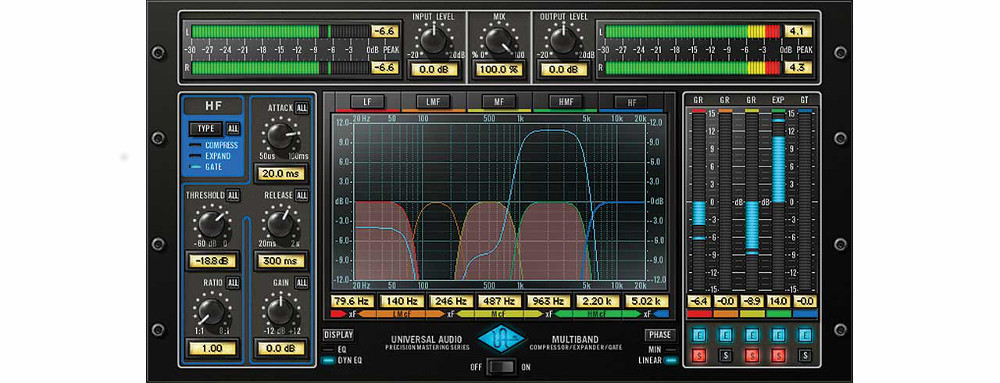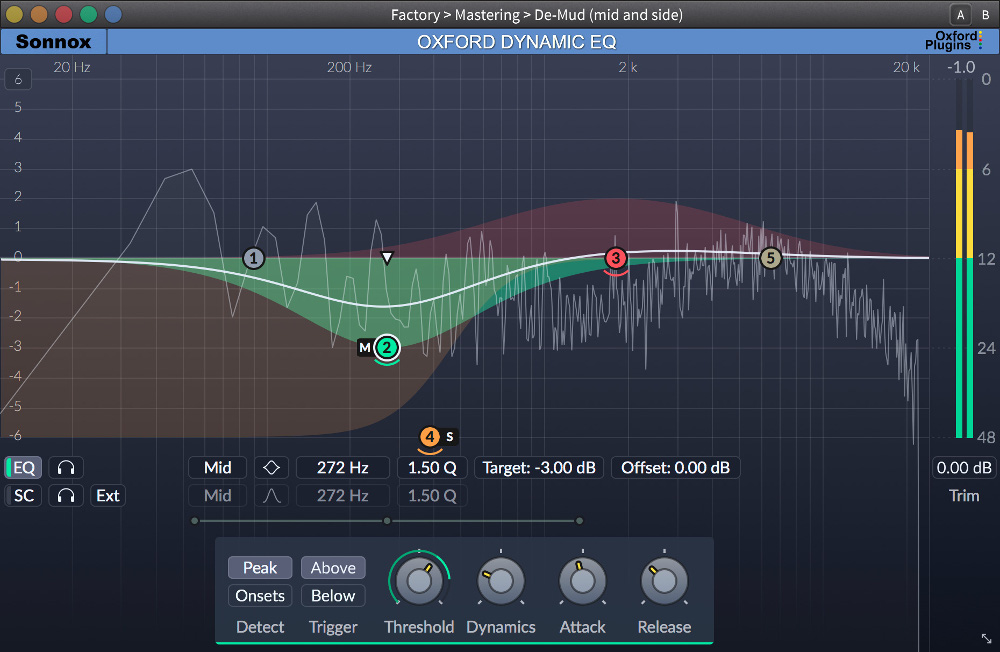10 Multiband Compression Tips to Take Control of Instruments and Vocals
Multiband compression is a mix engineers dream.
Standard compressors focus on the dynamics of the overall sound whereas a multiband compressor can focus on several frequency sections at once. It will control your low end on a track separately from the mids and top end.
Having control of different frequencies to compress within a recording really allows for the engineer to hone in on frequencies that can stop a sound from taking its rightful place in the mix. Focusing on multiband compression can also help a new engineer understand the effects of compression at different frequencies, which can come in quite handy during a mix.
Old skool engineers had compressors and de-essers. Now with multiband compression we have added the midrange into the picture. Utilizing compression for the mids can yield some amazing control with instruments/vocals that need to sit within a mix.
Multiband compression has been around for quite some time now and I do see engineers utilize this tool, but not as often as they should. For example, I reach for a multiband 90% of the time when working on lead vocals that need to cut through a big mix. (Be sure to see three more of my creative vocal mixing tips in my previous SonicScoop article.)
Multi band compression utilized wisely:
1) Make sure to NOT overdo it unless you’re going for THAT SOUND.
2) Always compare your tracks to references. Note: not just for compression but for the color of the sound.
3) Always keep in mind that after your mix, there is the mastering stage so one must be careful not to over-compress. In other words, leave room for the mastering engineer to do their thing.
4a) Listen to your track solo AND while all instruments are playing, to hear how the multi band compressor track sits in your mix.
4b) What you do prior to the multiband can make all the difference in the world.
You can use an EQ prior to a multiband to help shape each section, in order to hit the multiband in ways that will help give the desired color for that frequency section. For example: You might want to boost 80-100 Hz to see how the multiband compressor reacts and the colors that will shine through. Different EQs will yield different results and affect how the multiband will react, so I would suggest spending some time trying different EQs — you might find one EQ gives you great results on the bottom end but another EQ gives you the smoothness of the kicks you desire.

Heavy metal: The TUBE-TECH SMC 2B Stereo Multiband Compressor is a hardware unit equipped with three independent optical stereo compressors.
Also worth noting is that today you can easily utilize a dynamic EQ which performs both EQ and multi band compression.
Since many multiband compression units have a solo feature for each frequency section, you can use this as a learning tool to hear your reference track thru it and realize frequency extension for instrumentation. For example: When you hear your reference track through the unit and solo the bottom end section, do you hear any vocals? Most likely you won’t. If you do hear them in your mix, however, this is a good indication that your vocals might have a bit too much low end on them. You would then know to roll off some bass on your vocals until they disappear from the soloed frequency section.
5) Don’t confuse compression for EQ. Pay attention while in solo mode of each frequency section and compare to your reference. For example, solo your low end of the multiband on your reference and then solo the same section on your track. What is the difference? Is it EQ or compression? If your multiband compressor doesn’t have an RTA (real-time analyzer), I suggest using one to see the differences as well. A visual won’t hurt.
Things to listen for: gel, tightness, harmonic play, pump, level, fullness, and of course MUSICALITY!
By adjusting attack, release threshold and gain, you will start honing in on the sound that you want.
By following the above tips for each section, you should come to a decent conclusion. At this point I would suggest to only listen to the individual track in the mix (as opposed to soloed) and do final little tweaks according to taste.
8) Compare your final tweaked version to your bypassed version and make sure you didn’t remove any vibe or feel.
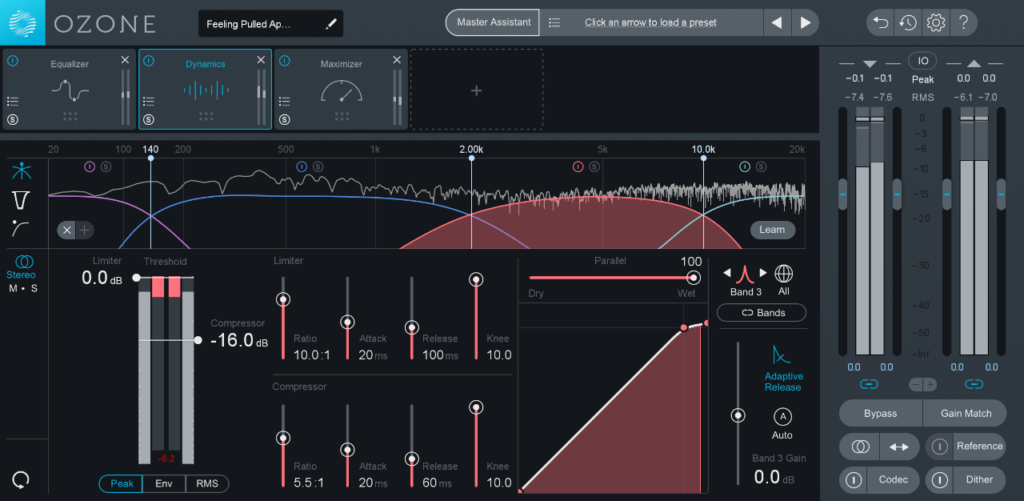
The Dynamics module in iZotope Ozone’s multiband compressor supports anywhere from single-band to four band compression. Each band has its own Attack time, Release time, Threshold, Ratio, and Makeup Gain.
Sometimes, mixing both dry and wet can yield great results. If your multi band has a wet/dry function then give it a shot.
9) If your multi band has m/s features, then you can utilize this to carve out your stereo versus your center. A great trick is to set the feature according to sections of the song. For example, if you are utilizing the multi band onstereo background vocals, you can pull the sides in during the verses and expand during the choruses. This type of tactic can add dimension to different sections of your song.
10) Note: Before any of the above I suggest paying attention to the dynamics of your selected track. If some sections really are too loud and others to low in your mix, I would ride those parts and create a smoother level before even adding the EQ or multiband compressor. That way your EQ and multiband will respond in a much kinder way once added.
I have used multiband compression on everything including reverbs in the same manner. You can really stabilize the reverb and create some amazing colors for the background. The m/s section can work wonders on creating space for the original sound when blended in.
A multiband compressor can be quite the artistic and surgical tool in the right hands. Use it wisely.
Multiband in action! If you would like to hear vocals and instruments that have had multiband compression applied, Listen to the song below, where iZotope Ozone multiband compression was used on every single track in this song. ( I kept settings very light between 2:1 and 3:1 compression with attack and release times set according to each sound individually.)

Here are my honorable mentions of multiband compressors:
Hardware
Plugins
Christos “Stos” Tsantilis has 30+ years experience as a mixer, producer, and studio designer. His credits include P. Diddy, Dr. Dre, Just Blaze, Saigon, Pharoahe Monch, Big Pun, Terror Squad, Cuban Link, Ghosstface Killa, Mos Def, The Roots, Beatnuts, Fat Joe, Foreigner, Yes, Chris Theberge (Groove Collective), Mary j Blige, Queen Latifa, Wu-Tang Clan, and many more.
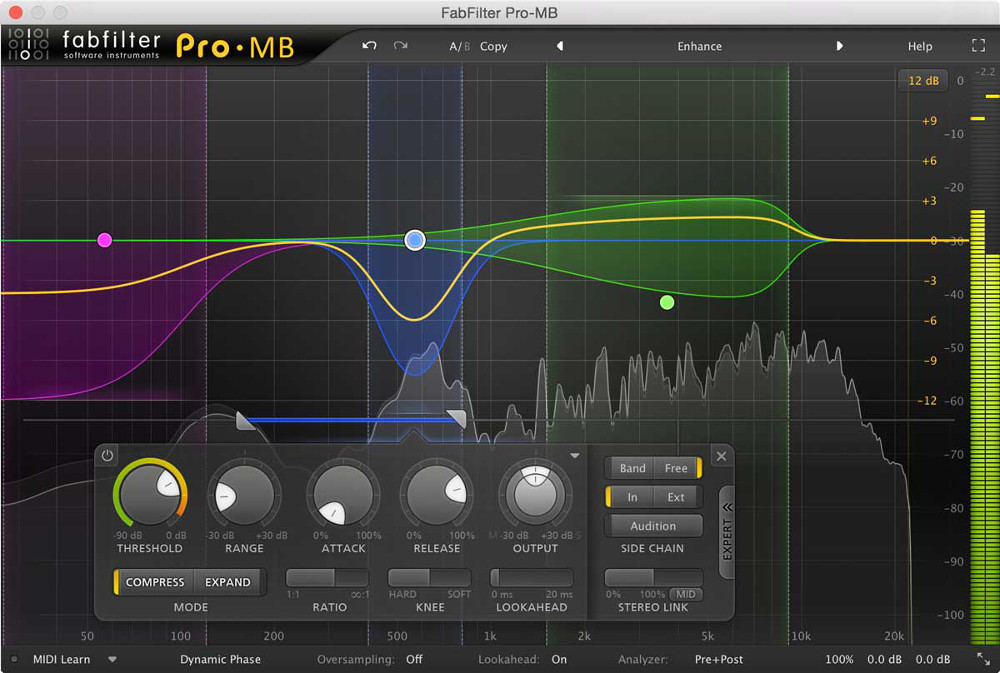
FabFilter’s Pro-MB offers up to six processing bands, which can be freely placed anywhere in the frequency spectrum.
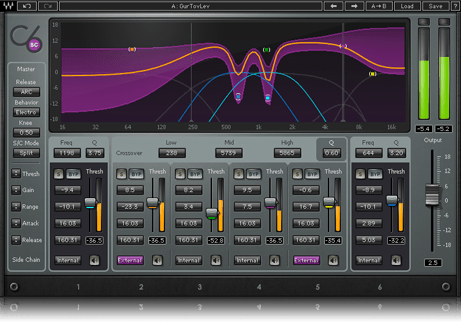
The Waves C6 multiband compressor added two additional floating bands plus a sidechain feature to their classic C4.
Please note: When you buy products through links on this page, we may earn an affiliate commission.







